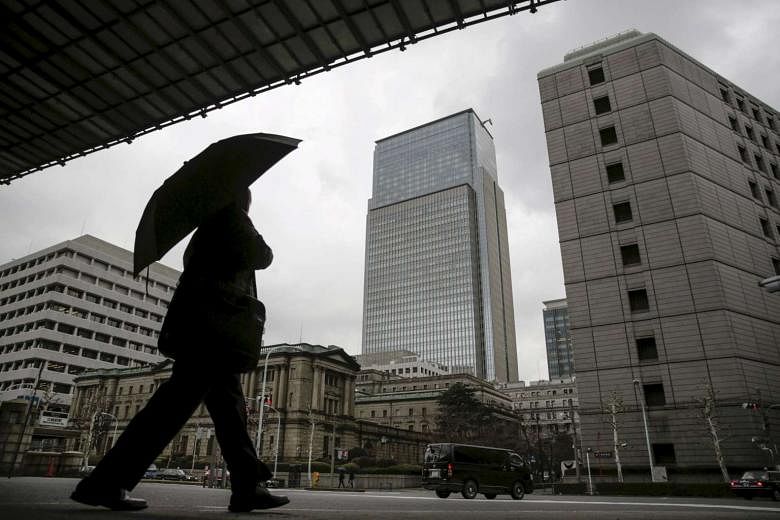TOKYO (BLOOMBERG, REUTERS) - Having adopted a negative interest rate on some excess reserves to penalize financial institutions for leaving money idle, the Bank of Japan may consider helping them lend by offering a negative rate on some loans, according to people familiar with talks at the BOJ.
The central bank added negative interest rates to the stimulus programme in February, charging commercial banks 0.1 per cent interest on a small portion of their reserves.
The officials said that adding this to the central bank's arsenal could have a positive impact on the economy, but would also raise questions about giving subsidies to commercial lenders. Financial institutions, who already feel penalized by the existing negative rate, could also face demands from borrowers to cut their lending margins further, said the people.
The BOJ may consider the new step if policymakers decide to lower further the negative 0.1 per cent interest rate applied to bank reserves. Its next two-day policy review ends on April 28.
The BOJ has two lending facilities, one that offers banks zero-interest funding for loans to companies in high-growth industries and one that provides zero-interest long-term funds to banks that increase lending more generally.
The BOJ would consider applying negative rates on both facilities, which would mean the central bank is paying commercial banks to accept funding.
The BOJ would adopt negative rates on its lending facility to further lower yields and support economic activity.
Japan's benchmark Nikkei share index climbed to an 11-1/2 week high after the news, which helped push the yen to its lowest point since April 6.
Under the BOJ's current quantitative and qualitative easing programme introduced in April 2013, the BOJ buys 80 trillion yen per year in government bonds and 3.3 trillion yen of exchange-traded funds.
This programme has so far failed to generate inflationary pressures needed to meet the central bank's 2 per cent inflation target by the first half of fiscal 2017.

